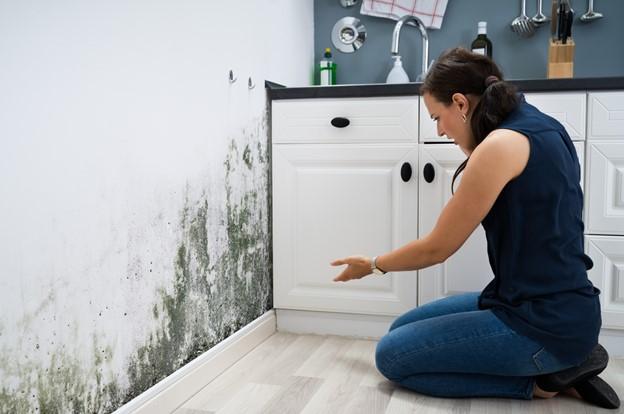Guide to a Mold-Free Home in Miami
Should you DIY or deploy Professional Company?
Ever wondered grade-3 biology class on microbes (viruses, fungi and bacteria) would be so relevant in 2020? Or one of our post-apocalyptic comic writers would be having the last laugh? Kudos to you if you did. Otherwise, most humans are notorious for taking actions quite late. Consider that stale smelling, depressive sight of an ugly mold in your beach view house or office in Miami. Now that it has reared its ugly head, began spreading its tentacles on your favorite bedroom wall, you wish to draw your lightsaber for total annihilation. However, you must know that mold growth is not an overnight phenomenon. It takes several weeks of ignorance of moisture build-up and some good old oxygen to prompt its growth. Any surface can attract mold growth like your kitchen table, that plush Italian carpet in your living room, your old books, that pizza you meal prepped last week (which you forgot in the refrigerator and then call yourself an adult) etc.
Now that you see the enemy-moisture buildup (aka uncontrolled humidity) you proceed to eliminate potential sources. Some of the methods can be:
- Fix leakage wherever you see it. It can be the kitchen sink, bathroom shower or garden hose. Use good quality YouTube videos to spot and fix easily repairable damage.
- Improve ventilation in congested spaces. Although it's sometimes difficult to create artificial aeration where natural cross ventilation is missing, try to create air movement in such spaces or expose them to sunlight whenever you can.
- Foundations of your home is another tricky space, ensure proper drainage and slope ground away from foundation.
- You can prevent moisture due to condensation by increasing surface temperature or reducing the moisture level in air (humidity). To increase surface temperature, insulate or increase air circulation. To reduce the moisture level in air, repair leaks, increase ventilation (if outside air is cold and dry), or dehumidify (if outdoor air is warm and humid).
- Air conditioning (HVAC) drip pans should be free flowing without any impediments.
- Dryers or any other mouse generating appliances should be vented out in open air whenever possible
- Low indoor humidity between 35-50% is ideal for lowering the risk of mould growth.
- Stick to the regular maintenance schedule of your building and seasonal maintenance of your HVAC appliance.
- Wet and samp spots should not be left unmonitored for more than 48 hours.
Seems like a lot of work? Well, that’s because it is. All the above mentioned methods are preventive in nature and should hold your house good from any substantial mold growth. However, sometimes mold growth can be complicated. There can be hidden mold. In old style architecture primarily from the 70s and 90s, sealed building compounds may result in lack of cross ventilation, leading to moisture buildup despite you taking all preventive measures. This allows mold to sneak up behind vinyl drywall or old wallpapers causing moldy odor. Even building materials, such as gypsum board, medium density fiberboard (MDF) and oriented strand boards (OSB) are sensitive to moisture.
Any moisture sensitive materials should be cautiously used while building. And it's also not that hard to find substitutes for such materials in the market which may come with additional lamination to protect them. Moisture problems may include roof leaks, landscaping or gutters that direct water into or under the building, and unvented combustion appliances.
Now coming to the most important question: what happens if things go out of control-should you call in a professional company to fix your mold problem, especially in Miami or should you go the DIY route. As a rule of thumb, if the moldy area is less than about 10 square feet (less than roughly a 3 ft. by 3 ft. patch), in most cases, you can handle the job yourself. However, you can contact Powerco Restoration, a professional mold removal company in Miami, which can do a better job when systematic cleanup of anything larger than this is to be undertaken.
More to Read:
Previous Posts:











